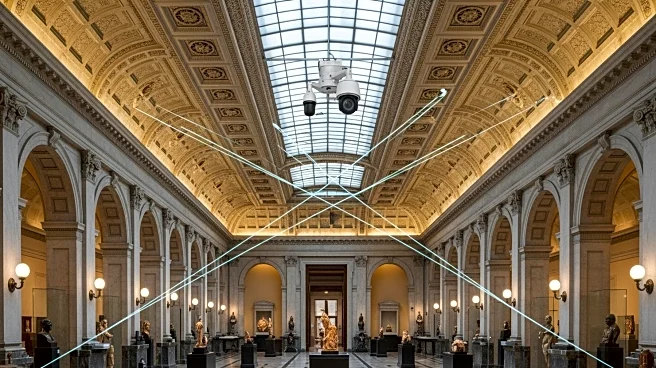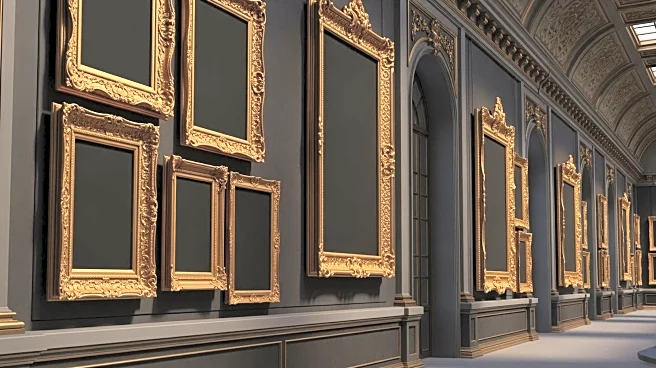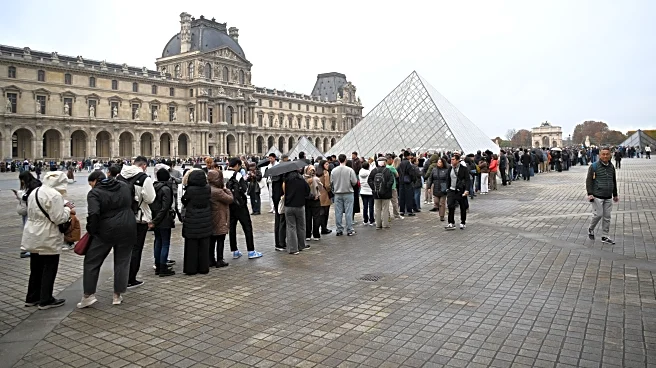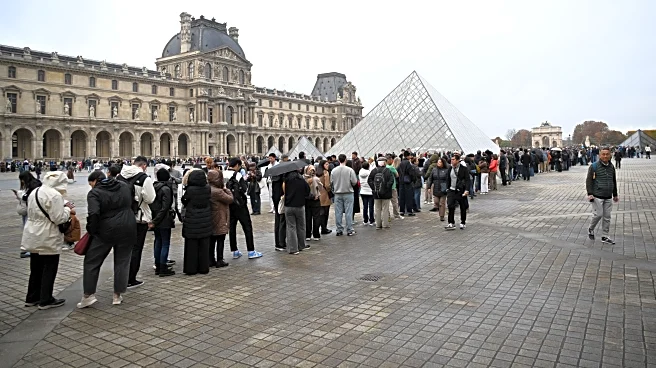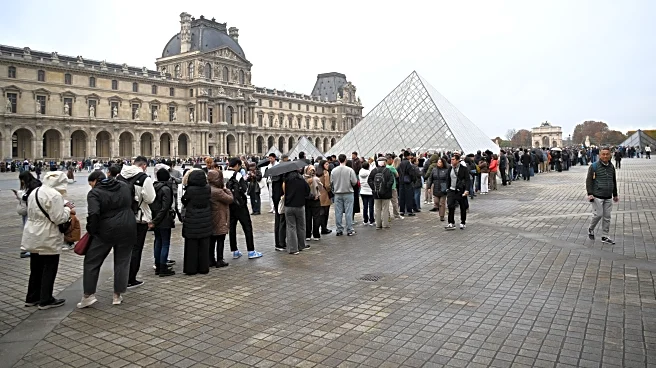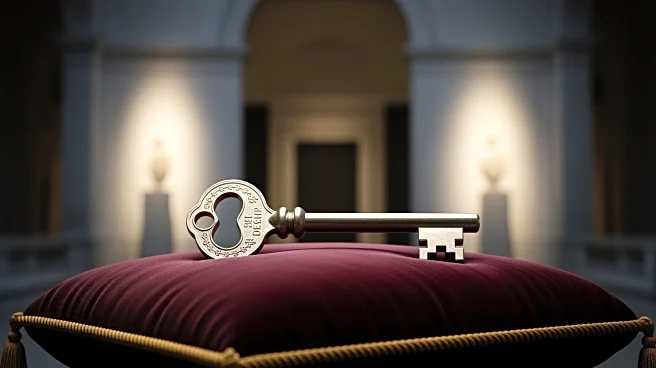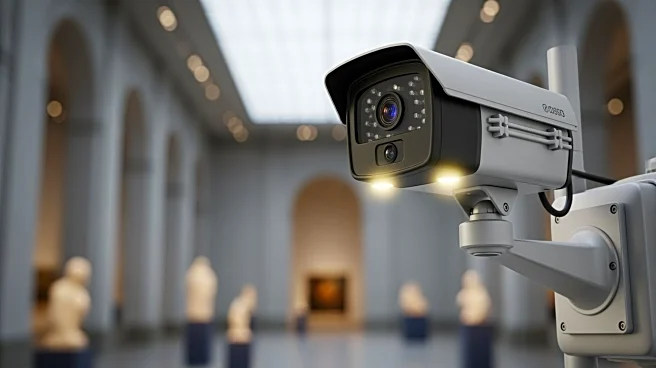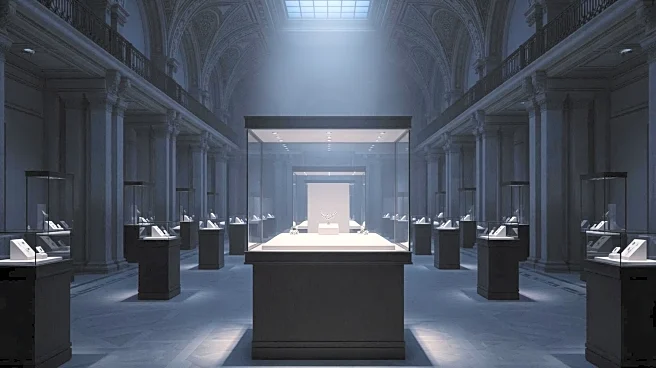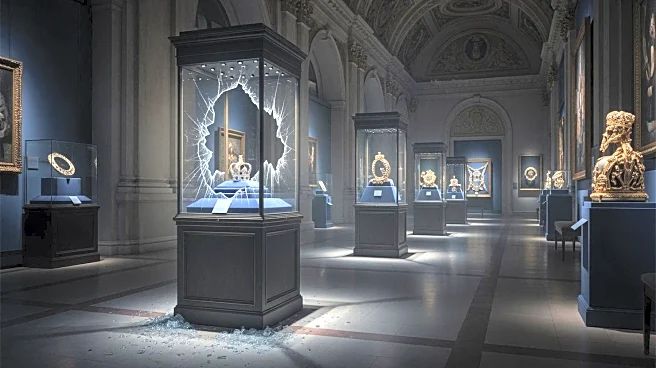What's Happening?
The Louvre Museum in Paris remained closed on Monday following a daring theft of Napoleonic jewels. The heist occurred on Sunday, when thieves used a basket lift to access the museum's facade, forced a window,
and smashed display cases to steal priceless jewels. The theft took place shortly after the museum opened, with visitors already inside, and was described by Culture Minister Rachida Dati as a professional operation lasting only a few minutes. French Justice Minister Gerald Darmanin acknowledged security failures, noting unsecured windows and the accessibility of the basket lift. Interior Minister Laurent Nunez has ordered a reassessment of security measures at cultural sites across France.
Why It's Important?
The theft of Napoleonic jewels from the Louvre highlights significant security vulnerabilities at one of the world's most-visited museums. This incident has prompted French authorities to reassess and potentially enhance security measures at cultural sites nationwide. The theft underscores the challenges of protecting valuable artifacts in public spaces, raising concerns about the adequacy of current security protocols. The stolen items, linked to historical figures such as Empress Marie-Louise and Empress Eugénie, represent significant cultural heritage, and their loss could impact historical scholarship and public access to these artifacts.
What's Next?
In response to the theft, French authorities are expected to implement stricter security measures at museums and cultural sites. Investigators are analyzing evidence found at the scene, including motorcycles with license plates, to track down the perpetrators. The Louvre's ongoing 'New Renaissance' plan, aimed at modernizing infrastructure and improving security, may be accelerated to prevent future incidents. The museum's closure and the investigation may lead to increased scrutiny of security practices at other high-profile cultural institutions.
Beyond the Headlines
The theft raises ethical questions about the protection of cultural heritage and the responsibilities of institutions to safeguard historical artifacts. It also highlights the allure and value of legendary artworks, which continue to be targets for sophisticated criminal operations. The incident may prompt a broader discussion on the balance between public access to cultural treasures and the need for heightened security measures.


